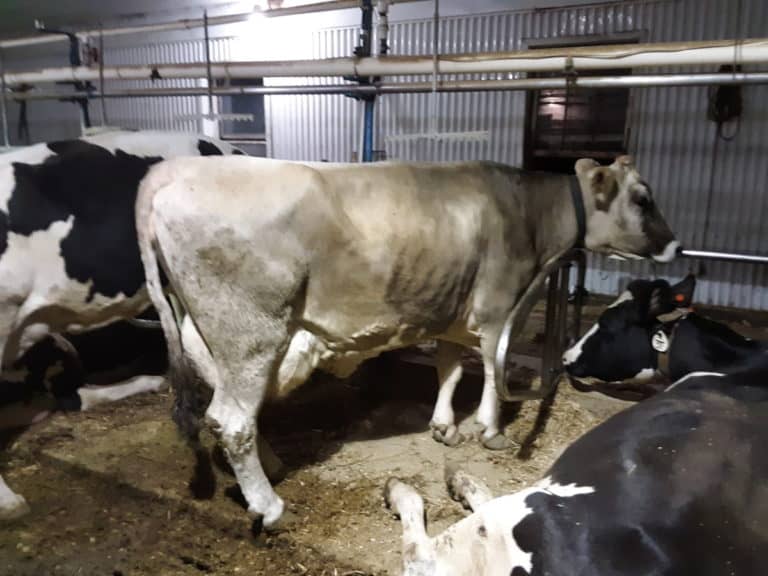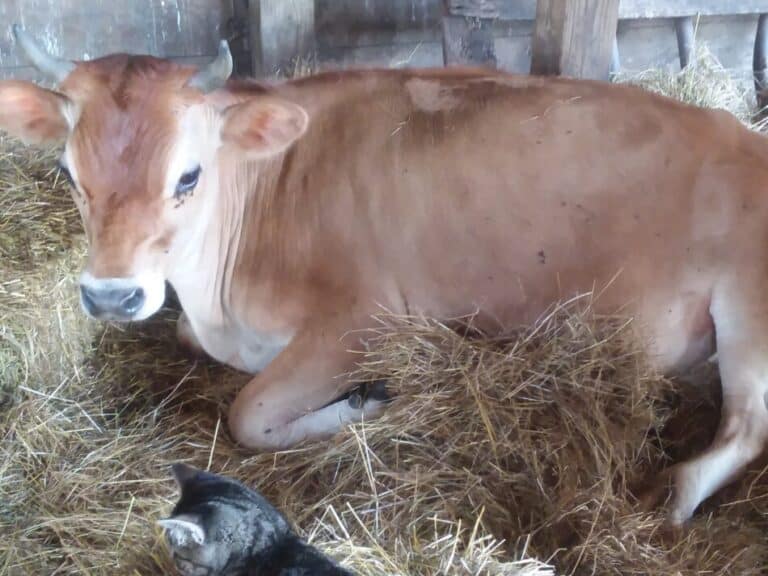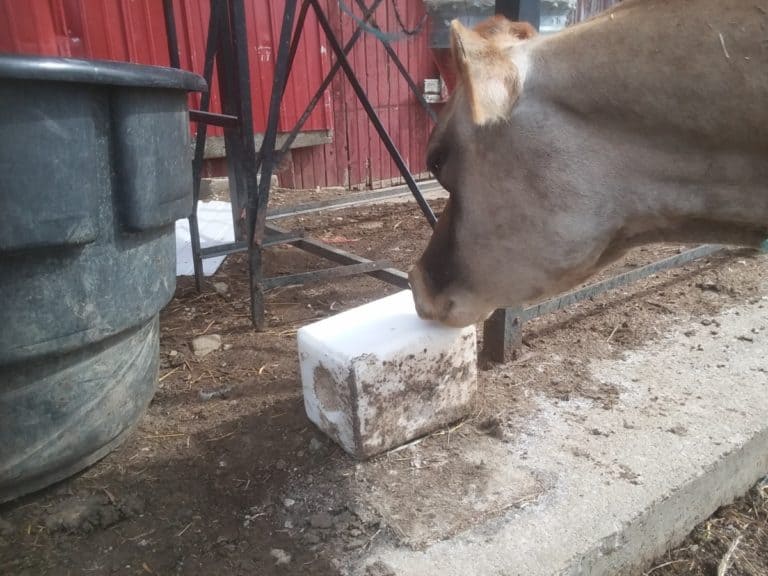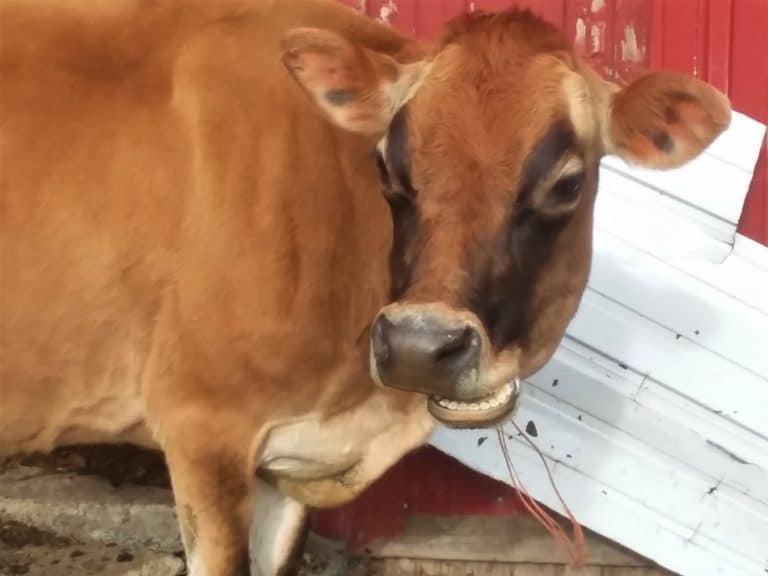Life Of A Dairy Cow: What Does She Do All Day?
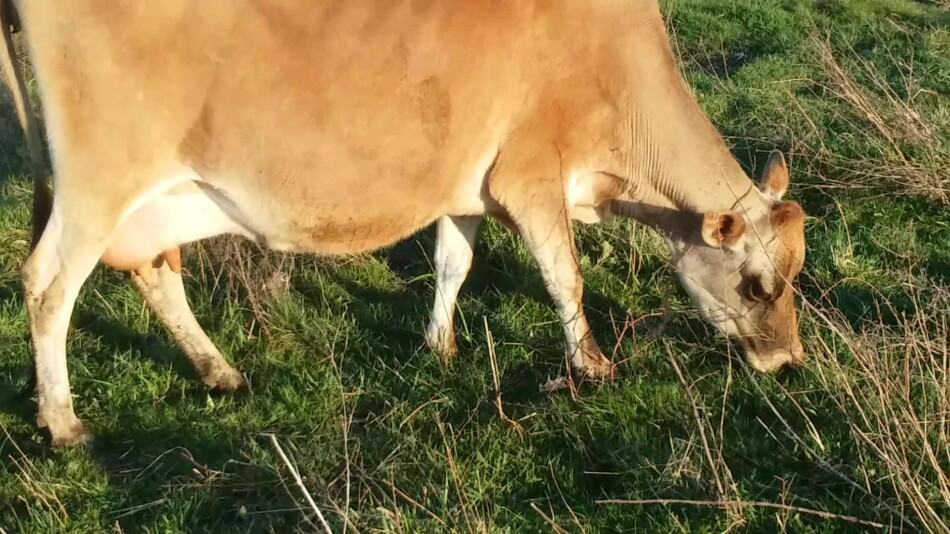
A dairy cow is a part of the workforce for the farm. The farmer or farm manager makes sure she is well taken care of and she provides milk. Let’s take a look at her normal day.
The life of a dairy cow is centered around eating and chewing her cud, which will give her the nutrition be healthy and produce milk efficiently.
Family Cow Milk Production goes over the amount of milk you can expect from your cow based on where she is in her lactation and what you are feeding her.
How do you know if you’re ready? My guide “Are You Ready For A Family Cow?” will walk you through the things you need to have figured out, including feeding needs and daily care, before you get your cow.
There are a variety of opinions about the life of a dairy cow from good to bad, with the truth being that a healthy animal always performs better for the farmer.
Whatever livestock you are looking at, any time, any where, healthy, happy animals living in a low stress environment will do the best job.
It is the job of the farmer to make sure the cows have everything they need to be healthy.
This includes appropriate nutrition, vet care when needed, living space that allows for movement with a comfortable place to lay down, and companionship. Cattle are herd animals after all.

It is also the job of the farmer to make the business profitable. If you don’t show up to work or are a low performer you will be fired and so will the cow.
Since the farm is a business, no freeloaders are allowed. Everyone, farmer and cow alike, work for their pay or they won’t stay in their job.
The ability to continually adjust and balance cow needs and business needs requires close attention and a variety of skills from the farmer.
Making sure the cows are well taken care of and the farm (the business) is well taken care of are the main reasons underlying management decisions.
The business of milking dairy cattle is all about efficiently and economically producing milk, no matter the size of the farm.
The best way to ensure profits is to keep the cows healthy and well tended.
Here is a great article from The University Of Kentucky on Good Dairy Stockmanship, this is how you work with cattle. It’s well worth the read!
A dairy calf get a bottle for 6 weeks
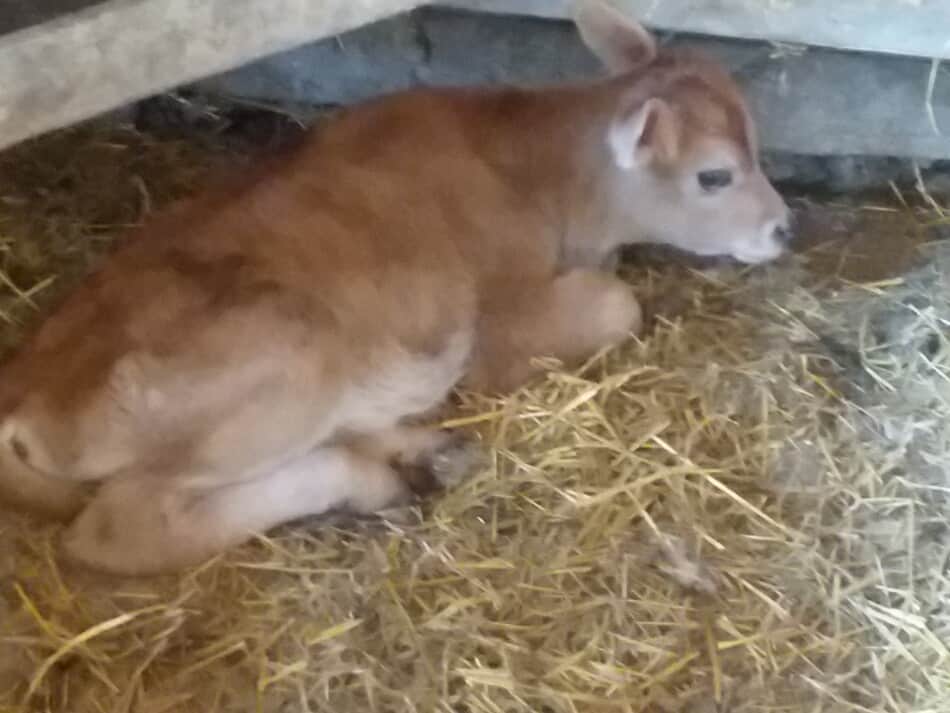
- A calf gets milk for six weeks
- She lives in her own hutch
- She will be weaned before she joins a peer group
A dairy calf can be born any time of year
A dairy calf can be born anytime of the year. Most dairy farms have calves born every month.
This makes the best use of the calf hutches and helps keep a steady number of milking cows in the herd.
The calf is born in a maternity pen. This is a special well bedded pen with only soon to be moms kept in it.
This way the farmer can keep a close eye on any cows giving birth and easily jump in to help if needed.
When the calf is dry, it is moved from the pen, given an ear tag and put in a hutch.
Calves like other live birth animals are born wet. This is from the amnionic fluid the baby lived in while still inside the mom.
The calf will live in a calf hutch
A calf hutch is a small shed, think of a really big dog house, that the calf lives in. Most farms have a fence around the front of the hutch to give the calf a place to lay outside in the nice weather.
The hutch is placed on a pile of bedding, usually straw or sawdust, to keep it up off the ground so no water can get in the pen.
Inside the pen the calf will have a water bucket, some calf starter (feed made specifically for young calves), and a small hay rack.
Calves are fed a bottle of milk twice per day
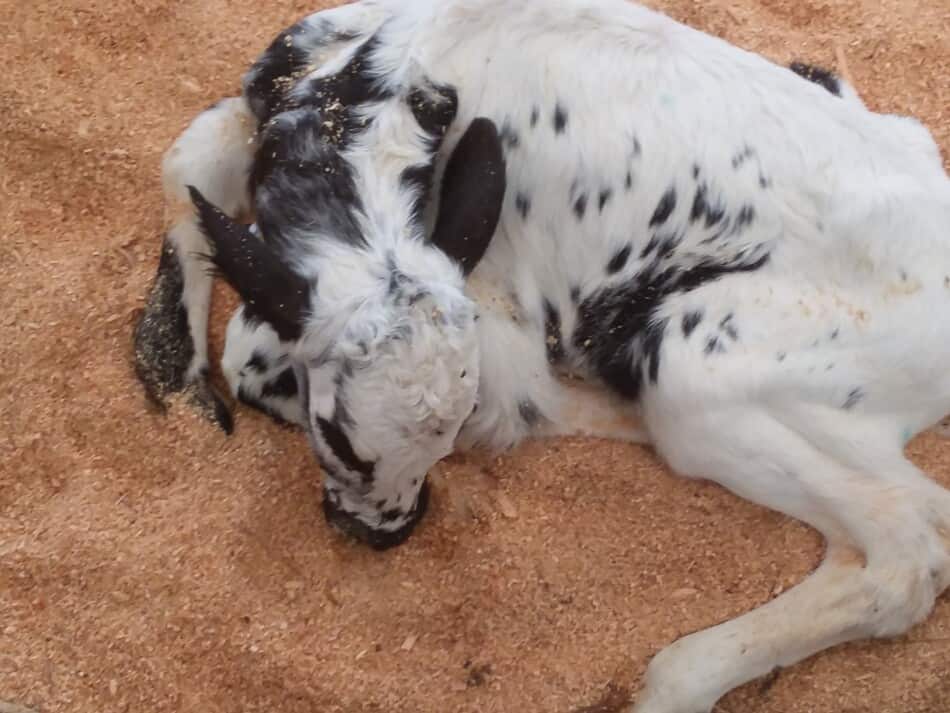
All calves need a bottle of milk to drink twice a day, for about 6 weeks.
We always fed our calves extra milk straight from the cows, it’s warm and ready to go.
Some farmers choose to feed their calves milk replacer instead. Milk replacer is a powdered milk that just needs warm water added and stirred to be ready to feed.
Milk replacer is a likely choice if the farm keeps the calves a distance away from the milking barn.
Normally, dairy farms keep the heifer (female) calves and sell the bull calves, so the calves in the hutches are probably heifers.
The heifers are kept one to a hutch with the hutches lined up side by side.
Calf hutches are grouped together
The calves can see each other while in the hutches. Spending the first six weeks in a hutch gives them time to get more coordinated and capable before putting them in with peers.
Cattle are pushy with each other even the young ones like to push and shove.
Individual hutches make it easy to see how each calf is doing everyday. Being in a hutch makes it easy to be sure she’s eating and looks happy.
Dairy heifers live with their peers
- Heifers are housed groups
- The main job of a heifer is to grow
- When she is 15 months old she will be bred
When weaned, heifers live in a group
Once the heifer is weaned (does not need a bottle of milk anymore and is eating solid food) she will be moved to a pen or pasture with other heifers her size.
The heifers will get feed and hay and of course water. The feed is formulated to give her all the nutrients she needs to help her grow well.
Heifers will grow taller and longer until they are about a year old then continue to fill out, get rounder, as they age.
At this stage not a lot is going on for the heifer, besides eating and growing.
The farmer is just taking care of the heifers and waiting until they are big enough and old enough to breed.
Dairy heifers are bred at 15 months of age
Ideally, when the heifer is 15 months old she will be bred. For a healthy well grown heifer this will be normal.
If she is a “poor doer” or just poorly managed of she will not be big enough to breed at 15 months. This is a costly mistake.
Early life nutrition and care of heifers must be skillfully managed.
If the farmer wants a healthy well grown heifer to breeding age and breeding condition by 15 months she must be well taken care of when young.
Why 15 months? Since the gestation length of cattle is 9 months, a heifer bred at about 15 months will have her first calf at the age of two years old (24 months).
Calving at two years is the ideal because this is when the heifer is big and strong enough to do well in the rest of her milking career.
Heifers can breed much sooner than this but it is wise to put off breeding until 15 months of age.
This way the heifer is well grown and can support the needs of the growing calf and be in great condition to begin milking.
Most dairy farms use artificial insemination
Many farms use A.I. (artificial insemination) for breeding all of their cattle. A.I. is popular because the farm does not have to keep around a bull, which is safer for the farmer.
Wondering About Using A.I. For Your Cattle? will go over the pros and cons of artificial insemination (A.I.) in cattle.
With A.I., the farmer can choose from a wide variety of bulls, some from other parts of the world. The cow can be matched individually to the bull that will produce the best, healthiest calf.
Since all cows and heifers are individuals, each one needs different traits to be emphasized or minimized to make improvements in the herd.
A.I. gives the most choices for the breeding options for each heifer.
Some farmers choose to use a bull, from either a beef or dairy breed. Since watching for the heat cycles in heifers takes a noticeable amount of time, using a bull lets the farmer get more done in a day.
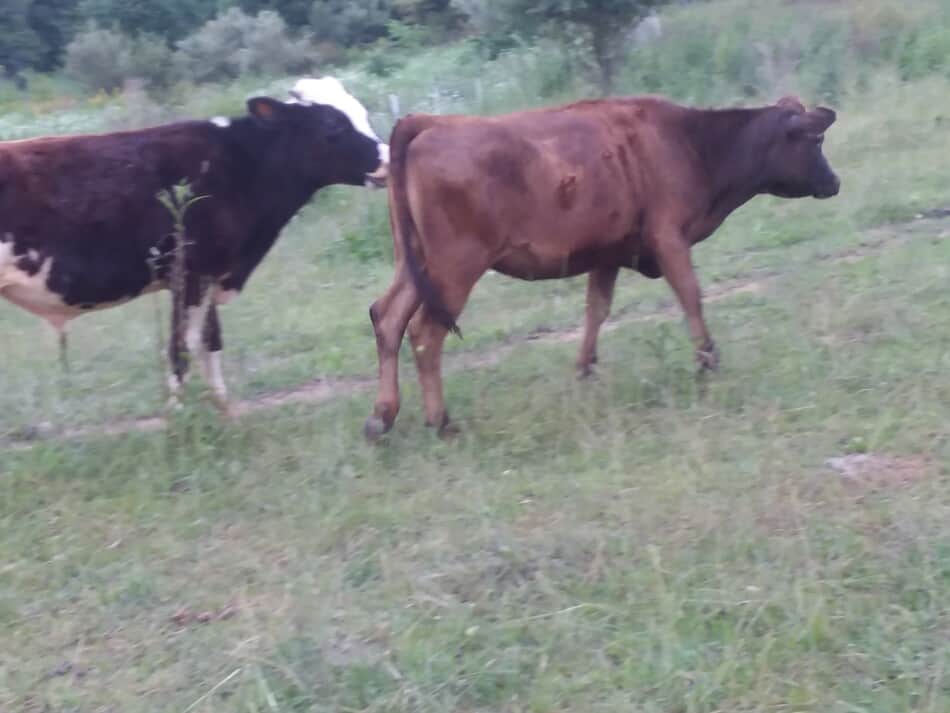
The life of a dairy cow is well managed
- Once the heifer has a baby she is now called a cow
- A cow starts milking when she is two
- She will milk for three months then be bred again
- She will milk for 10 months total per year
- She will get a two month vacation called a dry period
- She will have her next calf and start milking again
When a heifer calves, she is now a cow
The life of dairy cow as a cow (before this she was a heifer) begins at two years old when she has her first calf. She will be kept with her calf until she licks it off and the calf nurses.
After calving, fresh cows join the milking herd
Once the calf is dry and has nursed, the cow is moved into the fresh cow pen and the calf is taken to a hutch.
The fresh cow (a cow that just had a baby) must be milked separately from the rest of the milking herd until her milk transitions to normal milk, which is in about 3-4 days.
Colostrum is fed to her calf
The first milk produced after the calf is born is called colostrum. Colostrum looks different than regular milk in that it is very yellow in color and has a thicker consistency.
This special milk will give the calf passive immunity (keep it from getting sick until it’s own immune system starts working).
Fresh cow health is closely monitored
The fresh cows are kept together to make checking on them easier. If a cow is going to have problems now is a likely time. Most cows go through calving and the first few days of lactation (milking) just fine.
Some cows, especially if they are overweight, have problems adjusting metabolically to the new demands upon her system.
Generally this maladjustment shows up as milk fever.
Milk fever is a misnomer to be sure, since it is not a sickness at all nor does the cow have a fever (body temperature is usually lower than normal in milk fever).
This is a metabolic problem that is easily fixed with an I.V. calcium mix. If a cow needs to be treated for milk fever she will be back to normal really fast, about 15 minutes-impressive!
A fresh cow will adjust to her new life quickly
Usually, a heifer comes though calving just fine and adjusts to her new life quickly.
One of her first new skills is learning how to behave in the milking area, which is usually a parlor.
A milking parlor is designed so the cows are higher than the person milking so there is no bending down to put on the milkers.
She will learn how to come in to the parlor with the rest of the cows, to stand still during milking and to leave when done.
A new cow will be nervous the first few times she goes in to be milked but she soon learns that milking is actually relaxing and since all of the other cows are calm she should be calm too.
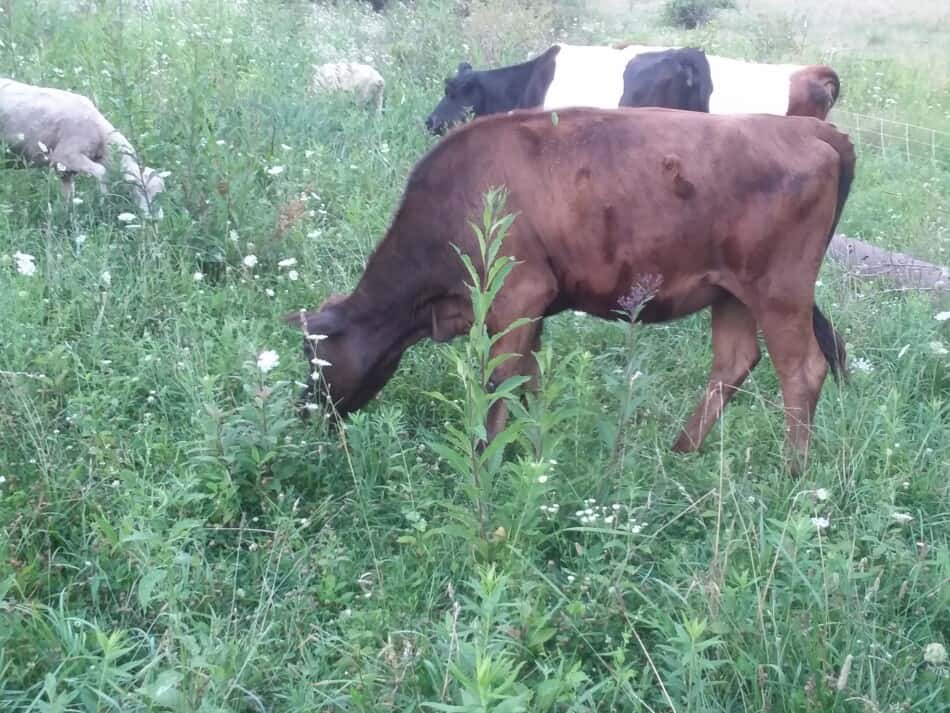
Milking happens twice a day on most farms
Milking, which is done twice a day on most farms, is one of the main parts of a cow’s day.
Milking three times per day gets more total milk from the cow each day but requires more feed and more labor.
Since the milkings are evenly spread out through the day at least one of those three times will be in the wee hours.
More information on milking can be found in my article Why Does A Cow Need To Be Milked?
How do you know if you’re ready? My guide “Are You Ready For A Family Cow?” will walk you through the things you need to have figured out, including feeding needs and daily care, before you get your cow.
Eating is a big part of a dairy cow’s life
The other main part of a dairy cow’s day is eating. Cows love to eat.
A dairy cow will eat all she needs from the feed and hay, or silage mix in the feed trough then she will go lay down and chew her cud.
She will spend hours chewing her cud because this helps her digest her feed. A cow that is happy and well fed spends a large portion of the day chewing her cud.
A milking cow eats feed specifically formulated to give her all the energy and nutrients she needs to stay healthy and milk well.
On most family farms the herd will graze on the pastures during the nicer weather. Pasture grass is wonderful for cows!
Routine is important to dairy cows
The new cow soon will learn to like the routine, since cows like things to be mostly the same everyday.
Having a routine makes her feel secure and keeps her stress low.
A cow is bred to have her second calf after three months of milking. This will make her next calf due at the same time of year as her first calf.
How To Care For Your Family Cow goes over the daily care of your best milker!
Dairy cows have a yearly production cycle
She will milk for ten months before having a dry period (a time when she doesn’t milk) in order to give her a well earned vacation and have her ready to milk again after the next calf is born.
Ideally, a cow will have a calf every year on about the same date. Ten months lactation, two months dry is a perfect schedule for the cow to be at her best.
If well taken care of, a cow can have a productive life of 10-12 years. This was a very normal age for our cows. A few superstars can be productive into their late teens!
Most large commercial dairies do not keep their cows as long, with 4-5 years being more of an average.
How do you know if you’re ready? My guide “Are You Ready For A Family Cow?” will walk you through the things you need to have figured out, including feeding needs and daily care, before you get your cow.
Related Questions
Can a cow produce milk without having a baby?
All mammals, including cattle (and humans), need to give birth before starting to produce milk.
Are cows forced to produce milk?
A cow can not be forced to produce milk. She naturally produces milk after she has a calf.
